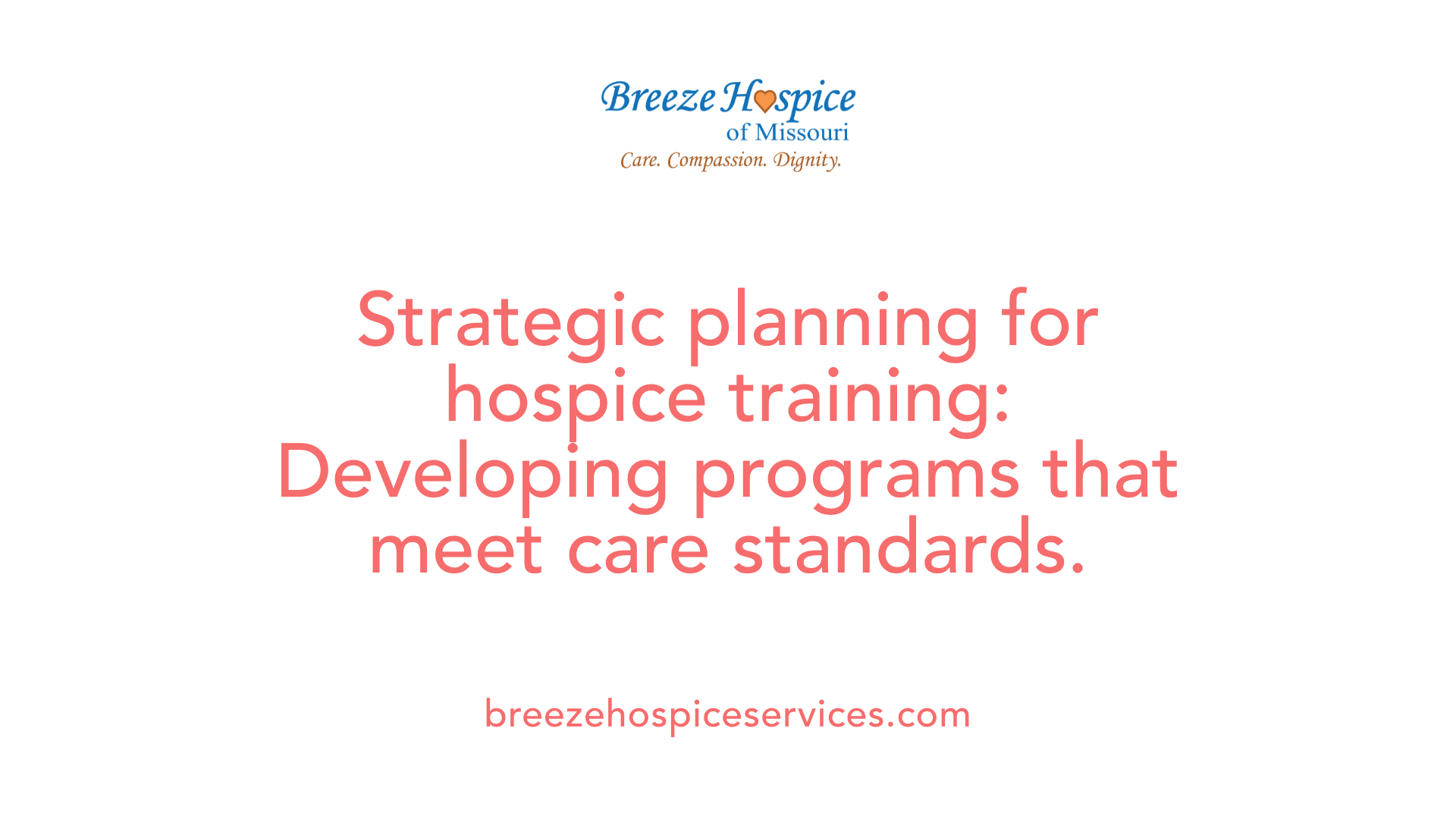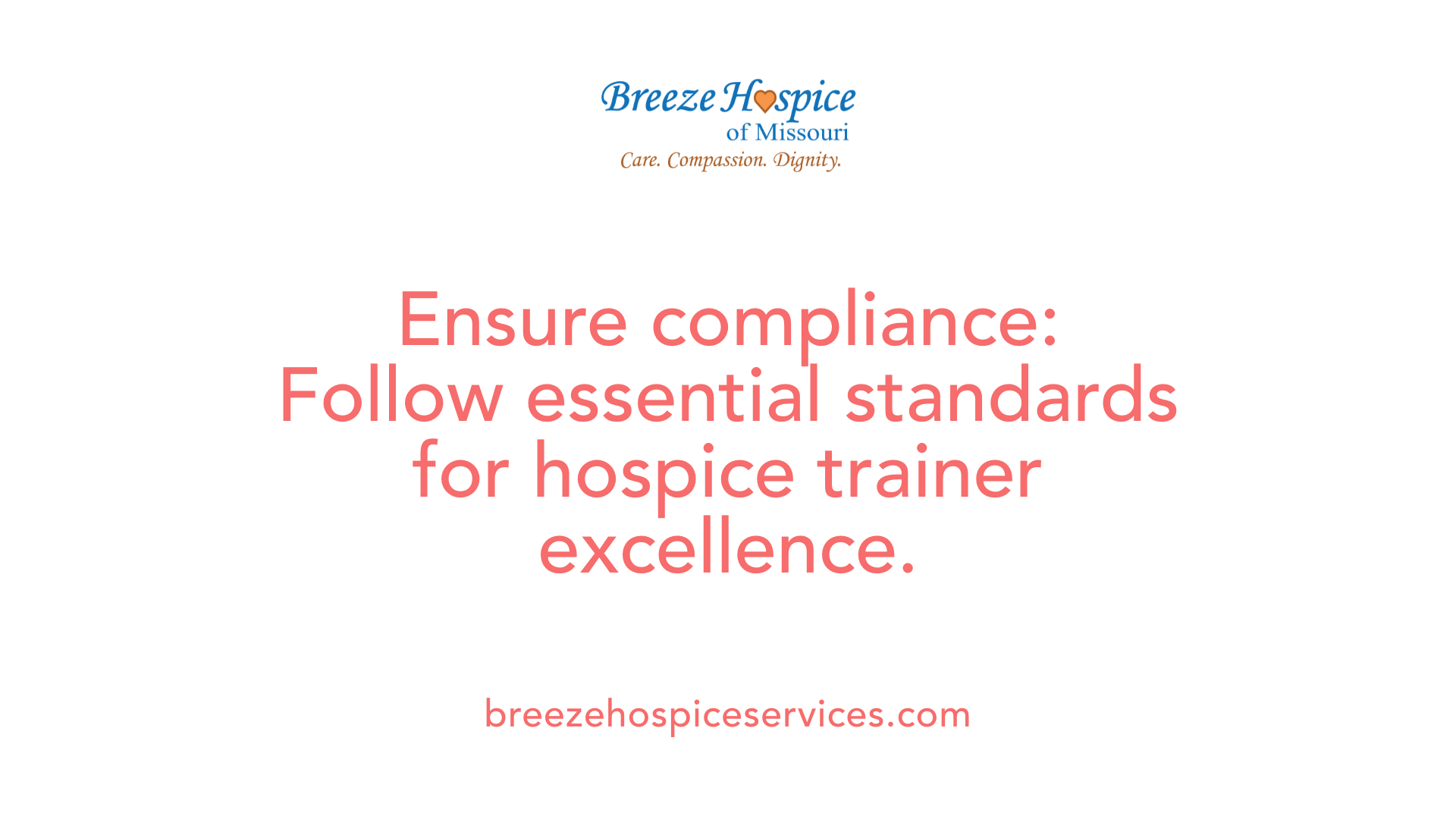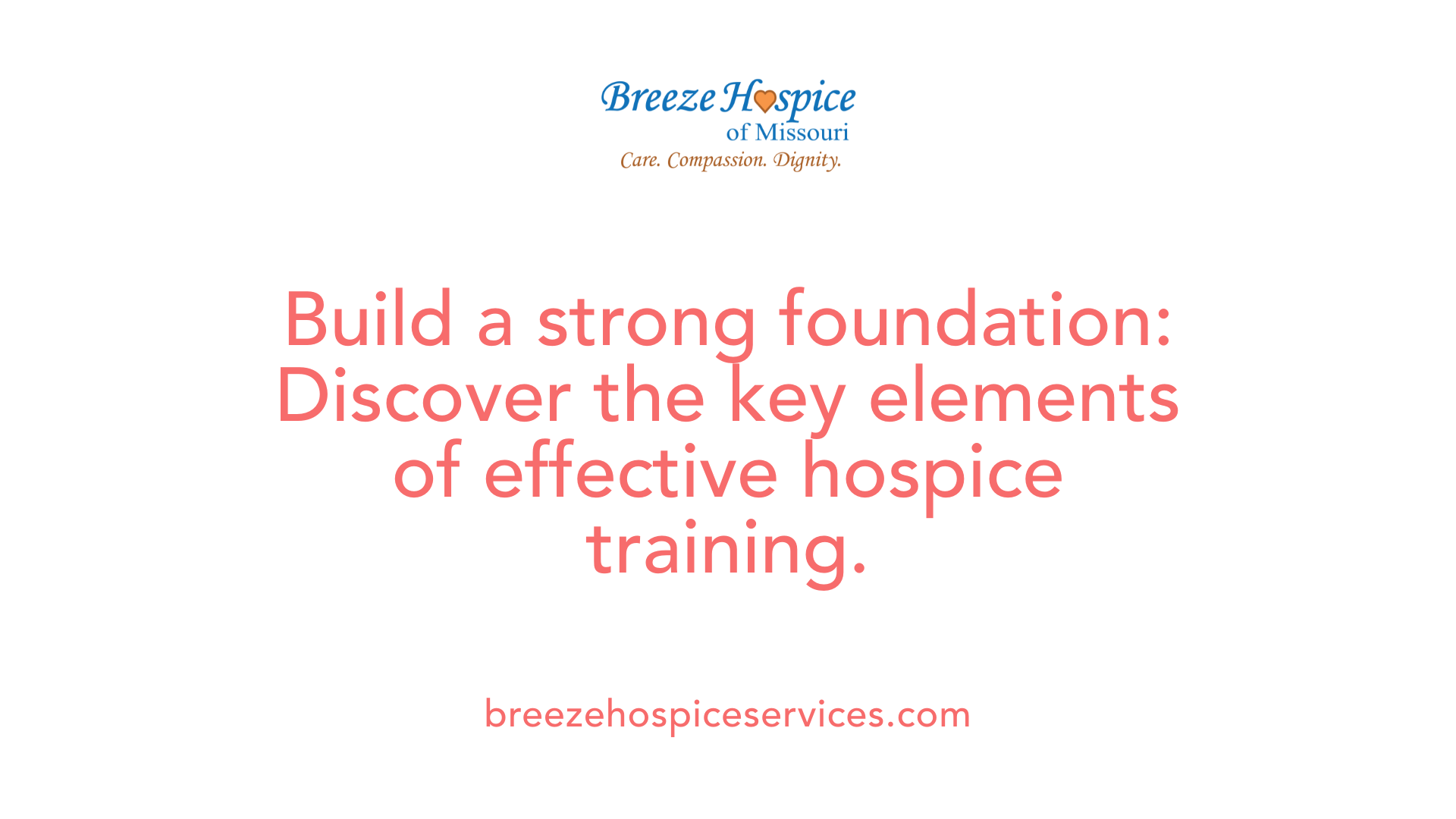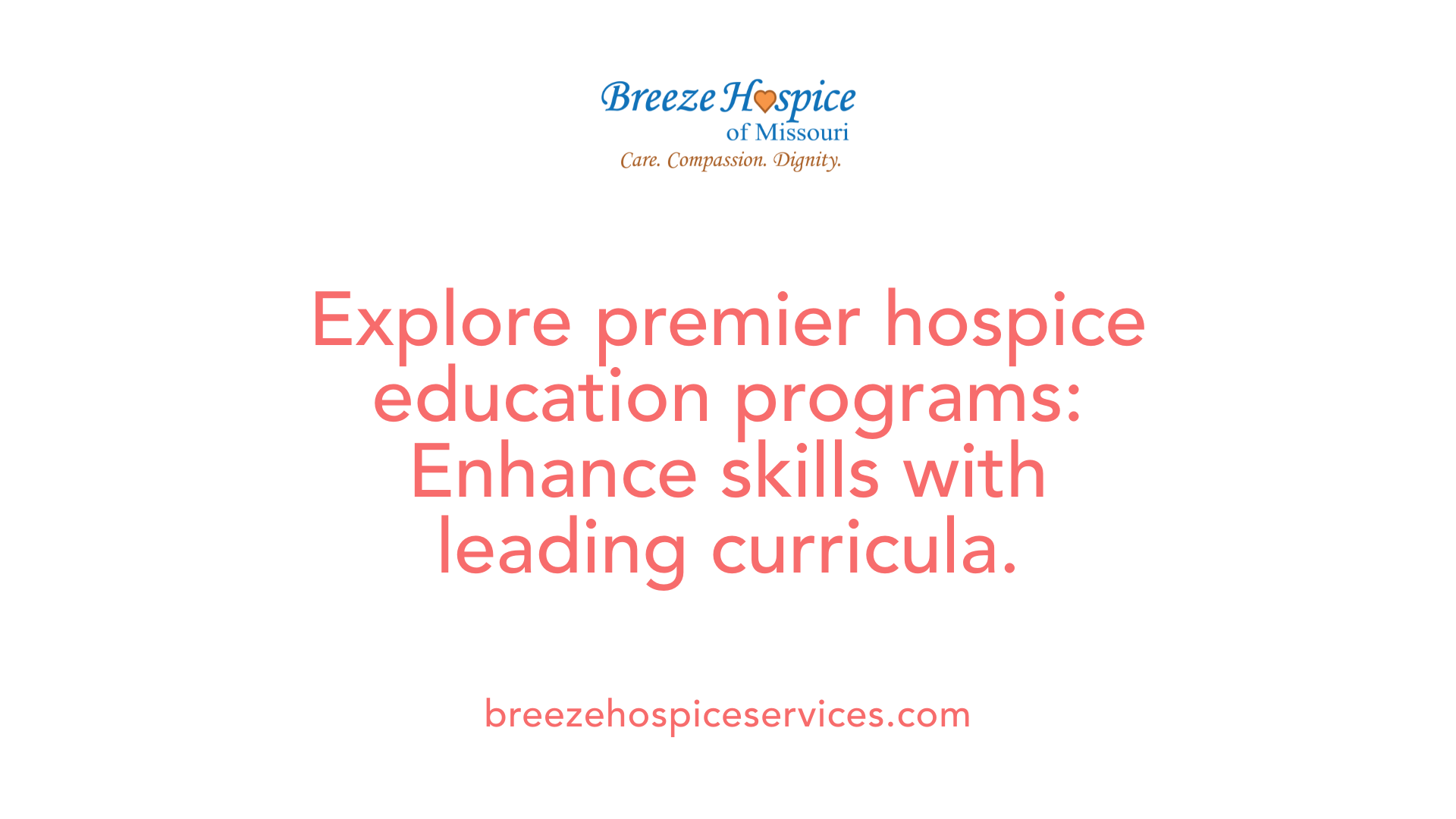Developing Effective Hospice Care Training Programs
July 21, 2025
Enhancing Hospice Quality through Strategic Education

Introduction to Hospice Care Training Excellence
Effective hospice care hinges on comprehensive, well-structured training programs that prepare the care team to meet the complex needs of patients and their families. As hospice services evolve amid regulatory standards and community expectations, developing training that is both practical and adaptable becomes critical. This article explores best practices and essential components for creating impactful hospice care training programs, emphasizing regulatory compliance, ongoing professional development, and innovative educational strategies.
Designing Strategic Hospice Care Training Programs

How can organizations develop effective hospice care training programs?
Effective hospice care training programs are vital for ensuring that care teams are well-equipped to meet the complex needs of patients and their families. One of the best practices begins with establishing clear training objectives that directly support the organization’s overall goals. Using the SMART (Specific, Measurable, Achievable, Relevant, Time-bound) framework helps in designing curricula that are focused and outcome-oriented.
Aligning training content with regulatory standards such as the Centers for Medicare & Medicaid Services (CMS) Conditions of Participation ensures compliance and promotes best practices. It helps staff stay updated on legal requirements concerning care planning, documentation, and patient rights.
Selecting qualified facilitators is equally important. Facilitators can be seasoned professionals with hospice experience or trained educators who understand adult learning principles. Incorporating online platforms that are user-friendly makes training accessible and adaptable, especially for busy healthcare professionals.
Hybrid learning models that combine pre-recorded videos, reading materials, and live discussions provide flexibility and reinforce learning. Ongoing mentorship and peer support initiatives foster continuous development and confidence among staff.
Regular evaluation and feedback mechanisms should be integrated to monitor training effectiveness. This includes surveys, performance metrics, and direct observation, which inform necessary adjustments to the curriculum.
Supporting ongoing learning through webinars, refresher courses, and professional development opportunities sustains staff competency over time. Encouraging participation in external certifications and industry conferences also broadens perspectives and deepens expertise.
In summary, a strategic approach combining clear objectives, regulatory adherence, qualified facilitation, accessible delivery, and continuous improvement creates a robust foundation for hospice care training programs that improve patient outcomes and staff satisfaction.
Adhering to Guidelines and Standards for Training Development

What are the guidelines and standards for developing hospice care training programs?
Creating effective hospice training programs involves strict adherence to regulatory and accreditation standards. These guidelines are designed to ensure that hospice staff are well-prepared to deliver compassionate and compliant care.
Regulatory frameworks require that hospice aides undergo comprehensive training before providing direct care. This training includes competency evaluations that test essential skills such as effective communication, observation, accurate reporting, and thorough documentation. These assessments validate that aides can handle the complexities of hospice care safely and confidently.
In addition to initial training, ongoing education is mandated to keep staff updated on best practices and regulatory changes. State and federal rules specify a minimum of 12 hours of in-service training annually for hospice aides. This continuous learning ensures that staff stay informed about infection control, emergency response, body functions, and personal care techniques.
Clinical documentation plays a crucial role in hospice programs. Maintaining accurate, timely, and compliant records is essential not only for quality assurance but also for legal and reimbursement purposes. Supervising registered nurses are responsible for regularly updating written care instructions, ensuring they reflect current patient needs and treatment goals.
Furthermore, developing training programs aligned with industry standards involves integrating practical skills training with theoretical knowledge. This combination ensures that staff can apply learned concepts effectively in real-life situations.
Lastly, compliance with accreditation standards, such as those from CHAP or The Joint Commission, reinforces the quality and safety of hospice services. Regular audits and evaluations of training content and delivery are vital to maintaining these standards and fostering a culture of continuous improvement.
In summary, effective hospice training development depends on rigorous adherence to regulatory requirements for staff competency, ongoing education, accurate documentation, and alignment with accreditation standards. These practices collectively support high-quality, patient-centered hospice care.
Core Components and Structure of Training Programs
 Effective hospice care training initiatives are designed to be comprehensive and adaptable, integrating multiple core elements to prepare healthcare professionals and volunteers for the unique demands of end-of-life care.
Effective hospice care training initiatives are designed to be comprehensive and adaptable, integrating multiple core elements to prepare healthcare professionals and volunteers for the unique demands of end-of-life care.
Firstly, a thorough needs assessment and gap analysis are essential to tailor the curriculum to specific learner backgrounds and identify existing knowledge deficiencies. This process helps define clear learning objectives and ensures that training content remains relevant and targeted.
The curriculum should cover fundamental topics such as patient care, communication strategies, ethical considerations, and cultural competence. These areas are vital for delivering compassionate, respectful, and effective hospice services. Courses often utilize diverse instructional methods, including traditional classroom sessions, online modules, role-playing exercises, shadowing opportunities, and mentorship programs. These varied techniques promote engagement, reinforce practical skills, and foster confidence among participants.
Mentorship and ongoing support are critical for translating training into clinical practice. Experienced professionals guide learners, offer feedback, and serve as role models, helping to sustain competence and encourage continual growth.
Aligning the training content with industry standards and regulations, such as CMS Conditions of Participation, is crucial for ensuring compliance and quality assurance. Incorporating performance assessments and program evaluations enables organizations to measure effectiveness, identify areas for improvement, and maintain high standards of care.
In summary, effective hospice training programs combine needs-based curriculum development, diverse instructional strategies, mentorship, regulatory alignment, and continuous evaluation. This holistic approach aims to equip care teams with the necessary skills and compassion to enhance patient outcomes and uphold industry standards.
Educational Resources and Curricula in Hospice Training
 A wide array of education programs and curricula are available to hospice care staff, provided by organizations such as CareAcademy, HPNA, and FHPCA. These providers offer diverse courses catering to different roles, including nurses, aides, social workers, chaplains, and physicians. The content ranges from foundational topics like end-of-life care and communication skills to advanced clinical practices such as pain management and ethical decision-making.
A wide array of education programs and curricula are available to hospice care staff, provided by organizations such as CareAcademy, HPNA, and FHPCA. These providers offer diverse courses catering to different roles, including nurses, aides, social workers, chaplains, and physicians. The content ranges from foundational topics like end-of-life care and communication skills to advanced clinical practices such as pain management and ethical decision-making.
CareAcademy, for example, offers comprehensive training that blends theory with practical skills, covering areas like physical and emotional care, cultural competence, and compliance with CMS regulations. The program includes courses designed for new professionals and those aspiring to leadership roles, such as hospice manager development, all available in flexible, online formats. Participants can earn continuing education units (CEUs) to support licensure requirements.
In addition to CareAcademy, leading organizations like HPNA provide online continuing education courses focused on symptom management, leadership, advocacy, and specialized clinical topics. FHPCA hosts webinars, in-person and virtual conferences, and offers certification programs, emphasizing industry standards and advanced practice.
These educational resources often come with certificates of completion or credits, which contribute to professional development and licensure renewal. Many programs are accredited by reputable bodies like ANCC, ACCME, and ACPE, ensuring quality and industry recognition.
The available resource types include webinars, structured curricula, on-demand online courses, and live virtual sessions. They are typically designed to be accessible and adaptable, accommodating busy healthcare professionals’ schedules.
Many organizations also collaborate to provide clinical and operational training, expand knowledge on topics like billing, compliance, and care planning, and foster interprofessional learning. These partnerships enhance the scope and depth of hospice education, ensuring staff are well-prepared to deliver compassionate, compliant care.
In summary, the spectrum of hospice training resources is extensive, covering clinical skills, operational management, and regulatory knowledge critical for high-quality hospice services.
Conclusion: Cultivating Excellence in Hospice Care Education
Developing effective hospice care training programs is a multifaceted process that requires strategic planning, adherence to standards, diverse educational methods, and ongoing evaluation. Emphasizing the integration of regulatory compliance, comprehensive content, and innovative learning modalities enhances staff competence and compassion. By leveraging resources from accredited organizations and fostering continuous professional development, hospice providers can ensure high-quality, patient-centered care that honors the dignity and wishes of those they serve. A committed investment in education not only elevates care standards but also sustains a motivated, skilled workforce dedicated to excellence in end-of-life care.
References
- Hospice Training - CareAcademy
- MDP Foundational Course - National Alliance for Care at Home
- Hospice Worker Training: Developing Knowledge and Compassion
- Hospice Care Teams | Continuing Education | Learning Pathway
- Education - California Hospice and Palliative Care Association
- Education - National Alliance for Care at Home
- Hospice Educational Resources - CMS
- Education – Florida Hospice & Palliative Care Association
- Keys to Effective Palliative Care Training Models - Hospice News
- Hospice Care Training - Certified Homecare Consulting



































































































